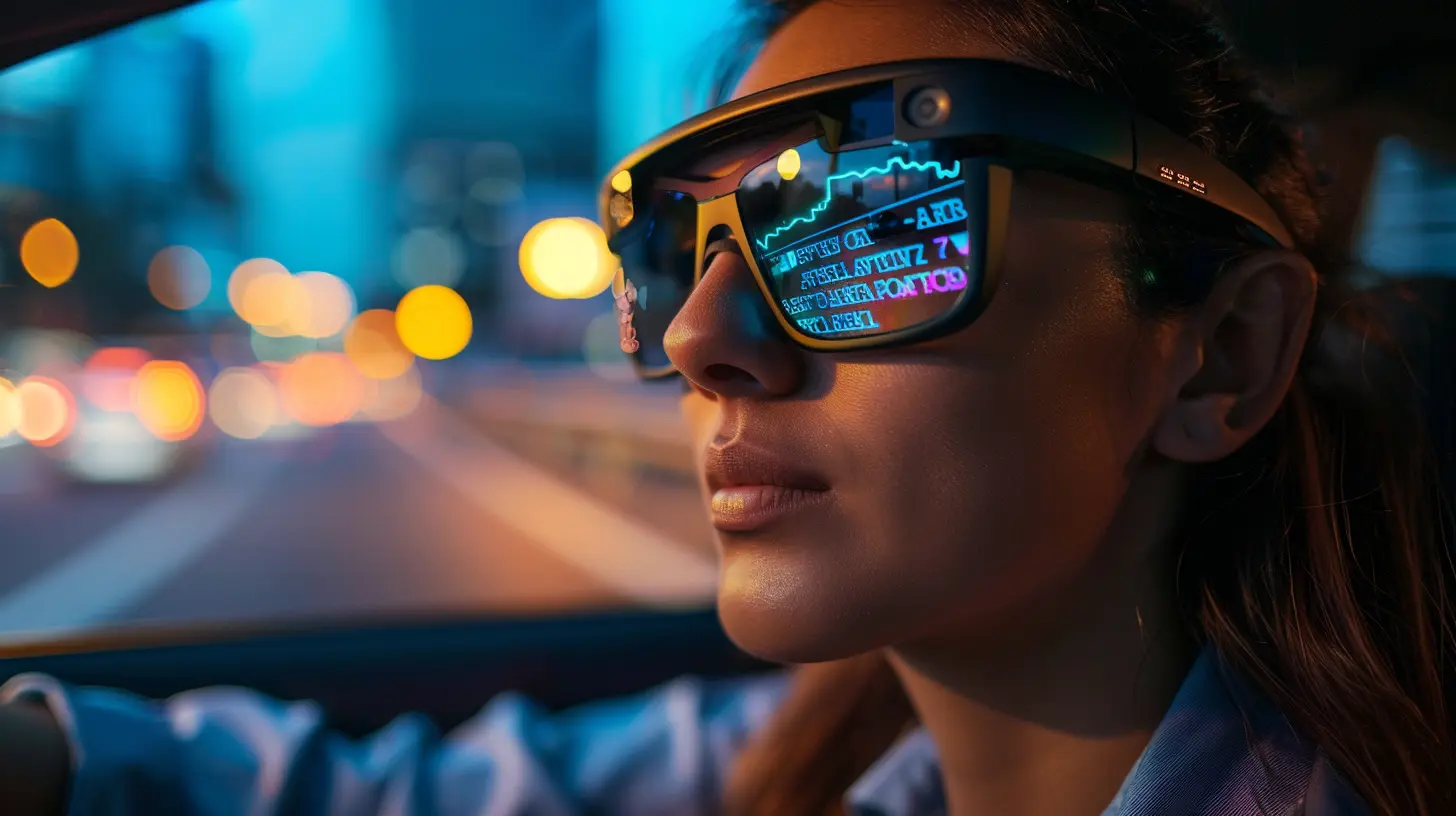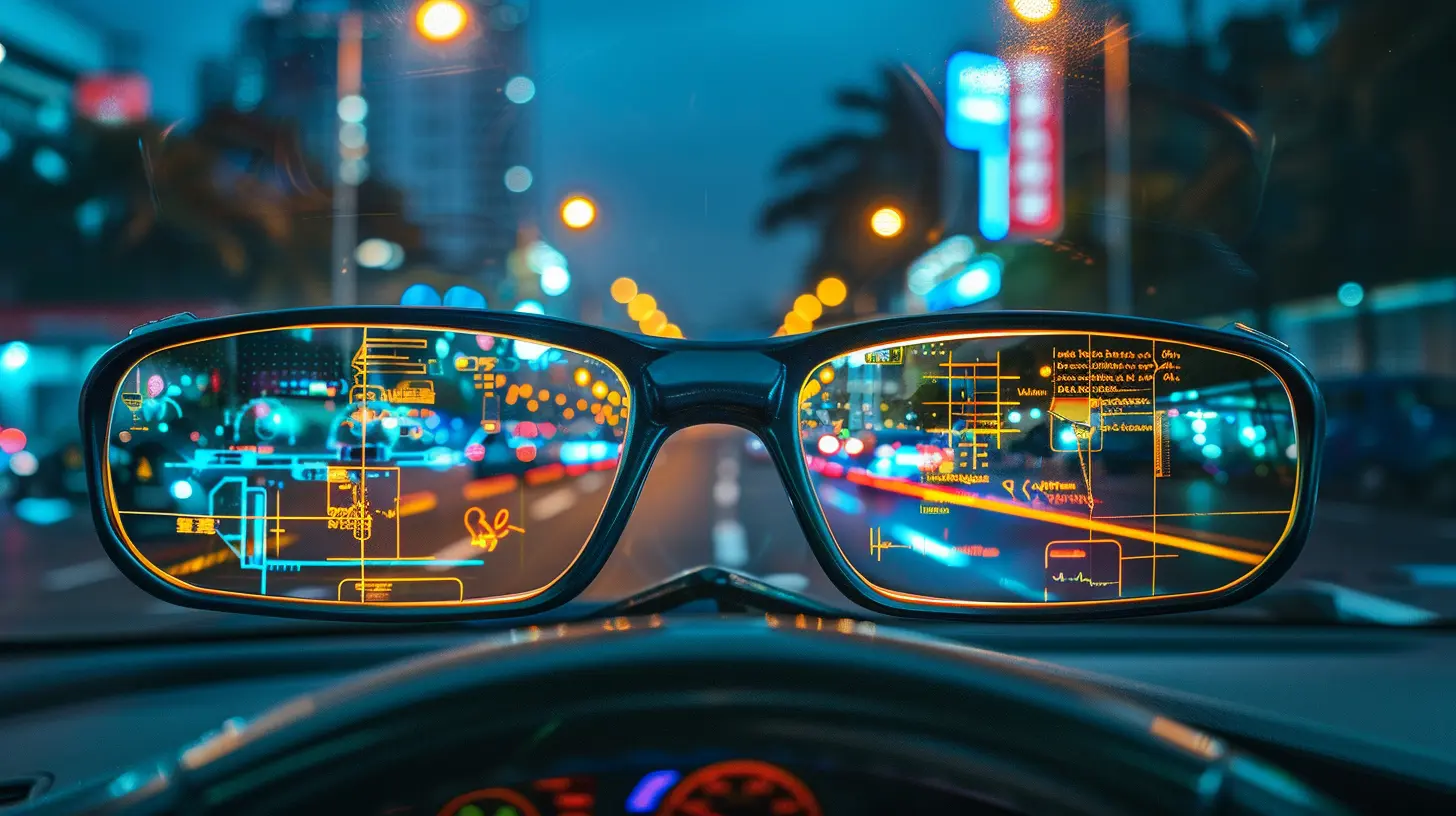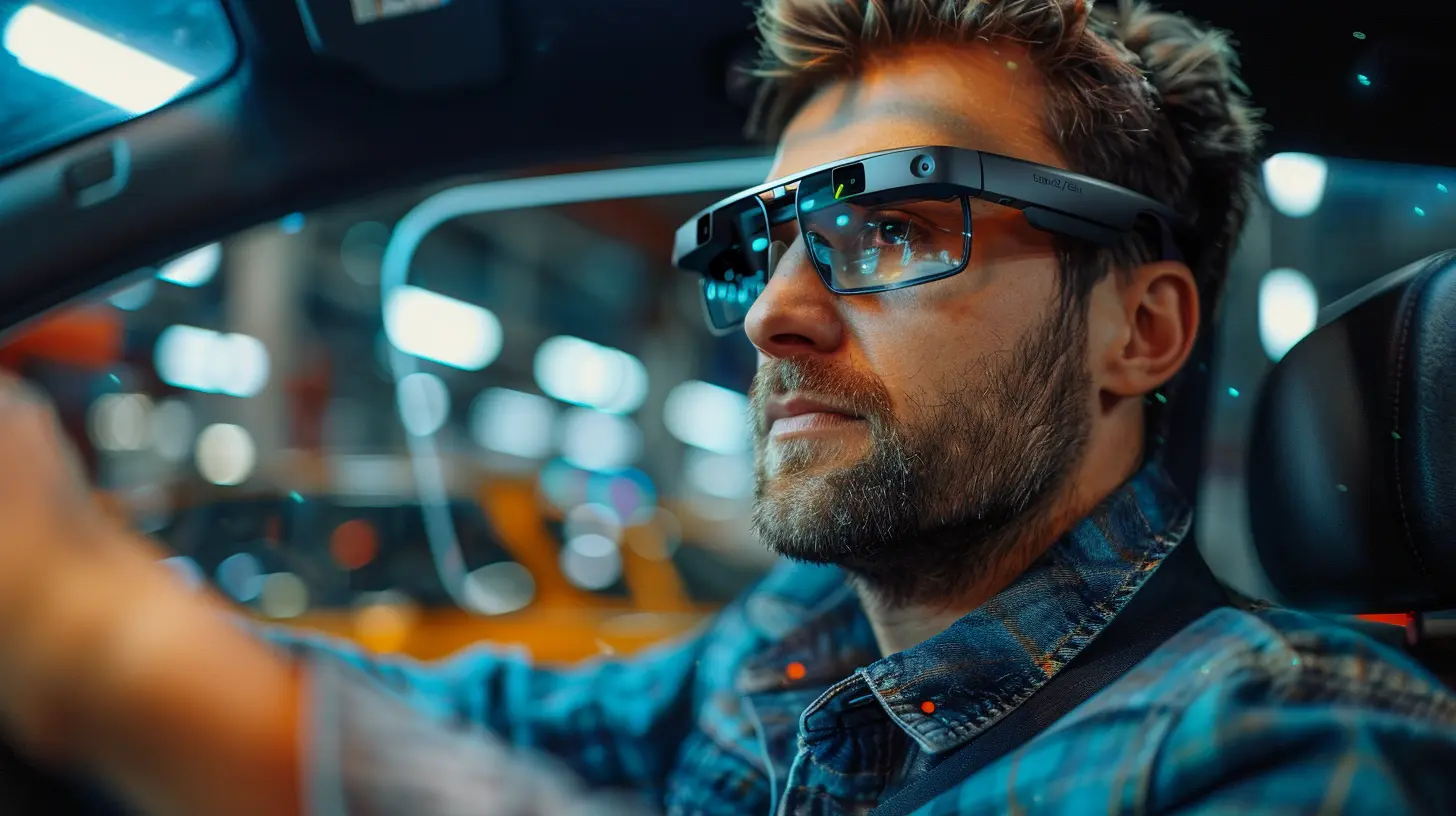AR Glasses in the Automotive Industry: Enhancing Safety and Navigation
9 July 2025
Picture this: You’re cruising down the highway, your hands on the wheel, eyes on the road. But instead of glancing at your phone for directions or squinting at dashboard lights, everything you need is right in front of you—literally. Speed, directions, hazard alerts, even incoming calls—streamed directly into your field of vision. Sounds like a scene from a sci-fi flick, right? But thanks to AR (Augmented Reality) glasses, this futuristic vision is fast becoming a reality, especially in the automotive industry.
Let’s dive into how AR glasses are not only changing how we drive but, more importantly, how they’re making our roads safer and our navigation smarter.
What Are AR Glasses, Anyway?
Before we get into the driver’s seat, let’s quickly break down what AR glasses are.AR glasses are smart eyewear devices that overlay digital information onto the real world. Think of them as a pair of regular glasses, but with a twist—tiny screens or lenses that project data, images, and even 3D content into your view. Unlike virtual reality (VR), AR doesn’t block the outside world; it enhances it. You still see everything around you—just... augmented.
Now, take that tech and pop it into the car scene. The result? A game-changer.
Why the Automotive Industry Is Embracing AR Glasses
You might be thinking, “Do we really need more gadgets while driving?” It’s a fair question. But AR glasses aren’t about distraction—they’re all about clarity, safety, and efficiency.Here’s the deal: traditional infotainment systems force drivers to glance away from the road. Even the seconds it takes to check GPS directions or incoming messages can be dangerously distracting. AR glasses eliminate that issue by keeping your focus forward while still feeding you everything you need to see.
Big car manufacturers, startups, and tech companies are all looking into this tech. And with more semi-autonomous features rolling out in vehicles, the demand for better driver assistance tools is growing like wildfire.
The Safety Boost: How AR Glasses Make Driving Safer
Let’s get real. Driving comes with a boatload of dangers—blind spots, unexpected obstacles, other drivers not paying attention (we’ve all been there). Here’s how AR glasses swoop in like a superhero:Real-Time Hazard Alerts
Imagine you’re driving on a dark, winding road. Suddenly, a deer crosses your path. Normally, your reaction time might be a tad late. But AR glasses can detect the obstacle through sensors or vehicle cameras and flash an instant warning in your line of sight. That extra second? It could save a life.Blind Spot Detection
We all hate blind spots. You check your mirrors, turn your head, and still somehow miss that sneaky motorcycle zipping through traffic. AR glasses can highlight vehicles in your blind spots, giving you a clear “heads up” right as you’re about to switch lanes.Improved Night Vision
Driving at night isn’t just stressful—it’s dangerous. AR glasses with night vision capabilities or enhanced low-light performance can brighten dark areas, making nighttime driving safer and way less nerve-wracking.Hands-Free Communication
Fumbling around to answer a call? Not anymore. With AR glasses, you can receive calls, get text notifications, and interact through voice commands—all without taking your hands off the wheel or your eyes off the road.
Navigation Reinvented: Goodbye, Dashboard Maps
Let’s be honest here—how many times have you missed a turn because your GPS said “Turn right now!” just a bit too late?Turn-by-Turn in Your Line of Sight
AR glasses revolutionize navigation. Instead of glancing down at a screen or phone, turn-by-turn directions pop up on your glasses. Arrows can appear on the road itself (virtually, of course), clearly showing where to go.Lane Guidance
Ever missed an exit on a five-lane highway because you were stuck on the wrong side? AR glasses can guide you to the correct lane in advance, signaling the best path long before you reach a junction.Real-Time Traffic Updates
And it doesn’t stop there. You’ll get real-time traffic updates, rerouting suggestions, and even weather alerts projected right in front of you. No more waiting for Siri to catch up with that traffic jam ahead.AR Glasses Beyond the Driver’s Seat
This technology isn’t just about the everyday driver. AR glasses are also changing the game for several other key players in the industry.For Mechanics and Service Technicians
Imagine a mechanic wearing AR glasses that show step-by-step repair guides, overlaying instructions on the actual engine parts. It reduces errors, speeds up diagnostics, and even allows for remote support—where an expert guides the technician in real time from miles away.For Delivery and Fleet Drivers
Delivery drivers often need to read manifests, scan packages, and communicate—all while staying on the move. AR glasses can display delivery info, routes, and customer notes while keeping hands free—improving efficiency and cutting down on mistakes.For Driver Training and Education
Training new drivers? AR glasses can simulate hazardous conditions—like icy roads or sudden tire blowouts—without the actual danger. It’s like a flight simulator, but for cars. Plus, real-time feedback can help learners form better habits from day one.Challenges the Industry Faces (Because It’s Not All Sunshine and Rainbows)
Okay, let’s pump the brakes for a second. As cool as AR glasses are, they’re not without their hurdles.Cost Concerns
Like most cool tech, AR glasses aren’t cheap—yet. Widespread adoption in daily driving will need more affordable pricing and mass production. But as with smartphones and GPS units, prices tend to drop as the tech matures.Distraction Risks
Ironically, the very technology designed to reduce distractions could become a distraction in itself—if not done right. Overloading the glasses with too much info or allowing unnecessary notifications can backfire. Less is more when lives are on the line.Hardware Design
People don’t want to wear bulky, awkward glasses while driving. The design has to be sleek, lightweight, and comfortable for long drives. Battery life, durability, and easy integration with various car models also matter more than you'd think.Legal and Regulatory Roadblocks
Lastly, we’re stepping into uncharted territory in terms of laws. Can you wear AR glasses while driving legally in all places? Will insurance policies adapt to this tech? Regulators need to catch up—and fast.Big Names Already Taking the Wheel
Several tech giants and carmakers are already exploring AR integration. You’ve got companies like:- BMW, which is rumored to be testing AR glasses for advanced head-up displays.
- Hyundai, working with AR for navigation and maintenance support.
- WayRay, a startup backed by Porsche, developing holographic AR for windshields.
- Bosch and Panasonic, both investing in enriched driver-assistance AR systems.
It’s no longer a matter of “if” but “when” this technology becomes the norm.
The Road Ahead: What’s Next for AR Glasses in Automotives?
As 5G spreads and IoT connectivity becomes standard, AR glasses will evolve rapidly. Imagine smart glasses that interface with your car, smartphone, smartwatch, and even city infrastructure.Picture this: You approach a red light, and your glasses flash a warning that a speeding car is about to run it from the other direction. That’s not just convenience—that’s potentially life-saving.
We’re heading toward a future where your commute will be smarter, safer, and way cooler.
Final Thoughts: A Clearer, Safer Road Awaits
AR glasses might not be in every car today, but their potential to enhance safety and navigation is undeniable. They’re not just a flashy gadget—they could become an essential tool for drivers everywhere.From giving us superhuman situational awareness to keeping our focus where it needs to be, AR is about making roads safer for everyone, not just making our lives easier. And if we can save lives, reduce accidents, and enjoy a stress-free drive—all while wearing a stylish pair of smart specs—why wouldn’t we?
So, the next time you hit the road, imagine a world where your windshield doesn’t just show the road—it tells you how to navigate it smarter. That’s the promise of AR glasses in the automotive industry.
all images in this post were generated using AI tools
Category:
Ar GlassesAuthor:

Gabriel Sullivan
Discussion
rate this article
1 comments
Zorion Coleman
AR glasses in the automotive sector represent a transformative leap, marrying safety with innovation. By overlaying critical navigation data and real-time hazard alerts, these devices not only enhance the driving experience but also pave the way for smarter, more intuitive vehicle interactions, ultimately prioritizing user safety.
July 18, 2025 at 11:53 AM

Gabriel Sullivan
Thank you for your insightful comment! I completely agree—AR glasses truly have the potential to revolutionize the automotive industry by improving both safety and user interaction. Your perspective highlights their transformative impact beautifully!


